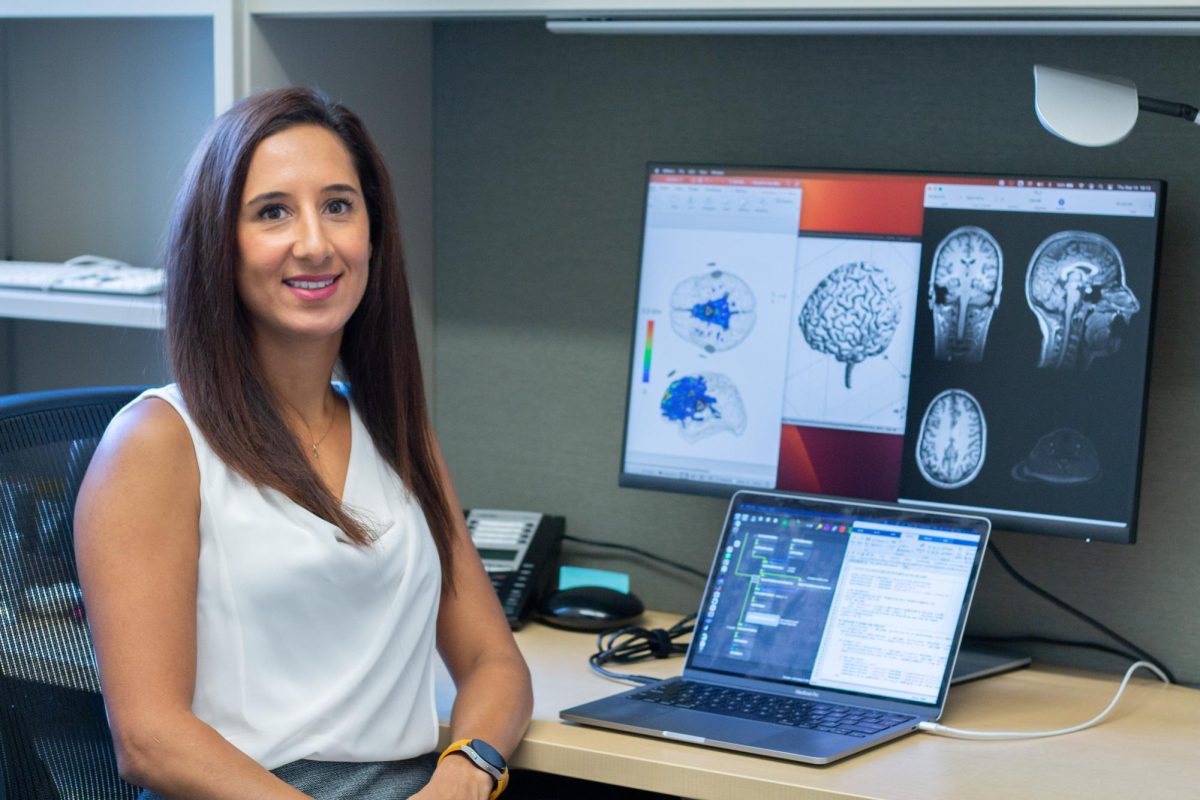On Friday, Sep. 8, 2023, UMass Boston announced the reward of a $2.9 million grant from the National Institute of Neurological Disorders and Stroke. Professor Sumientra Rampersad, Ph.D., is conducting a five-year research project funded by the grant titled “Overcoming the Barriers to Effective Transcranial Temporal Interference Stimulation in Humans” [1].
According to UMass Boston News, Rampersad’s research involves a new tool that combines both noninvasive neuromodulation with deep stimulation. As of right now, invasive neuromodulation procedures, such as surgery, carry serious risks, yet noninvasive procedures are unable to stimulate deeper areas of the brain. Neuromodulation is new in the field of medicine, and can potentially offer new options for patients who are treatment-resistant [1].
“Transcranial current stimulation is a form of noninvasive brain stimulation that applies currents to the scalp to temporarily alter brain function. It is easy to use and extremely low-risk compared to invasive methods that require surgery,” stated Rampersad. “Noninvasive brain stimulation has been shown to effect motor function, vision and memory, which can be used, for example, to help patients with rehabilitation after stroke. Unfortunately, we cannot use this to stimulate deep brain areas because the electric fields get weaker and less focused farther away from the scalp. These deep areas are exactly what we would need to reach to target diseases like Parkinson’s.”
Several professors and doctors from Northeastern University and the University of Utah are part of Rampersad’s research team. The Northeastern University team includes Assistant Professor of Physical Therapy and Electrical and Computer Engineering, Mathew Yarossi; Professor and Associate Dean of Research and Innovation, Eugene Tunik; and Research Professor of Electrical and Computer Engineering, Dana Brooks. The University of Utah team includes Associate Professors of Biomedical Engineering Chuck Dorval and Jan Kubanek [1].
Rampersad talked in detail about a new type of brain stimulation that was released in 2017, and how her team believed they could approach the neurological and psychiatric treatment issue at a different angle.
“A new method of brain stimulation was published in 2017, called Temporal Interference Stimulation. TIS uses currents at two stimulation frequencies that combine into an amplitude-modulated wave. This wave has a high frequency component that is too high for neurons to respond to, and a low-frequency component called the ‘beat,’ which is in the neuronal range,” Rampersad explained.
“In 2017, it was shown that TIS applied to the brains of mice can make the paw of the mouse move at the beat frequency. The interesting thing about this beat frequency effect is that it has its maximum strength deep in the brain, and therefore would allow focal-deep noninvasive brain stimulation, sort of the holy grail of brain stimulation. Since then, many research teams have applied TIS to humans in clinical trials targeting, for example, depression or anxiety disorders, but no positive results have been published.”
“Our research team believes that this is the wrong approach. One can waste a lot of time and money on studies when we do not yet know how a method works and how it should best be applied. Therefore, we proposed a project involving computational modeling and basic neurophysiology experiments in non-human primates and humans that will allow us to understand and improve the technique,” said Rampersad.
As for conducting the research itself, Rampersad is planning to hire postdoctoral and graduate students to work alongside her and her team. The research will involve live human and monkey test subjects. Results from these live experiments will be the first of their kind to prove that human brains can respond to TSI beat frequencies.
“…together we will work on modeling TIS in monkeys and humans. We will use MRI scans to build 3D head models in the computer, from which we can calculate the electric fields induced in the brain during TIS. We can also reverse this process to find where to place electrodes to optimally target a specific brain area. We will improve our modeling methods and optimization algorithms and provide experimental parameters for our two partner teams. The team at the University of Utah will use TIS in monkeys to provide the first proof of deep neuromodulation using TIS.”
“Using monkeys will allow a high number of experiments with a wide range of stimulation parameters and a well-established output for a deep brain area. The team at Northeastern University will apply TIS to the human motor cortex, which is a superficial part of the brain that controls movement. This will provide the first proof that the human brain can respond to the TIS beat frequency. In all experiments, we will vary the stimulation frequency and intensity and evaluate effectiveness and safety.”
While it is unclear as to when Rampersad’s labs and experiments will start, she proudly stated that her lab welcomes applications from undergraduate and graduate students that want to contribute to her research and participate in human experiments. All majors are welcome to participate, and no prior knowledge is required.
Sources:

